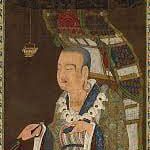Lord Byron | Childe Harold’s Pilgrimage | A Review
Lord Byron Childe Harold’s Pilgrimage A Review
Lord Byron | Childe Harold’s Pilgrimage | A Review
“Childe Harold’s Pilgrimage,” a poetic masterpiece penned by the iconic Lord Byron, is a deeply introspective and emotionally charged work that takes readers on an enthralling journey through the landscapes of both external landscapes and the human soul. Written in the form of a narrative poem, the work consists of four cantos and showcases Byron’s distinct poetic style, combining vivid imagery, introspective contemplation, and a sense of wanderlust
Poetic Craftsmanship:
Byron’s command over language is vividly evident in this work. His exquisite use of imagery allows readers to vividly visualize the picturesque landscapes he describes, from the rugged terrains of Europe to the sun-soaked shores of the Mediterranean. His descriptions are imbued with a sense of romanticism, often juxtaposing the beauty of nature with the melancholic sentiments of the protagonist, Childe Harold. Byron’s skillful manipulation of rhyme and meter creates a lyrical flow that resonates with the emotional core of the narrative.
The Enigmatic Childe Harold:
The titular character, Childe Harold, serves as both the protagonist and the narrator of the poem. A disillusioned and introspective young nobleman, Childe Harold embarks on a physical and spiritual journey across various European landscapes. Through his eyes, readers witness the world-weariness and existential ponderings of a man seeking solace and meaning amidst the world’s grandeur. The character’s inner conflict and emotional turmoil are skillfully captured by Byron, making him a relatable and complex figure.
Exploration of Themes
“Childe Harold’s Pilgrimage” delves into a multitude of themes, each woven intricately into the narrative fabric. Nature’s sublimity serves as a backdrop for contemplations on the transitory nature of human life and the inexorable march of time. Byron contemplates the contrast between the serenity of nature and the tumultuousness of human emotions, ultimately reflecting the internal struggles of the protagonist.
Romanticism and the Sublime:
Byron’s work is often associated with the Romantic movement, and “Childe Harold’s Pilgrimage” epitomizes the key tenets of this literary movement. The concept of the sublime, a central idea in Romantic thought, is explored as Childe Harold confronts the vastness of nature, leading to a sense of awe and insignificance. The Romantic notion of finding profound meaning in the natural world is elegantly portrayed as the character grapples with his emotions amid breathtaking landscapes.
Socio-Political Commentary:
While the poem is fundamentally a personal and introspective journey, it also reflects the socio-political context of its time. Byron’s critique of societal norms and his skepticism about the values of aristocracy are subtly interwoven into the narrative. The poet’s disdain for the superficiality and decadence of society is palpable through Childe Harold’s observations and reflections on the world around him.
Legacy and Influence:
“Childe Harold’s Pilgrimage” not only established Byron as a prominent figure in the literary world but also left an indelible mark on subsequent generations of poets and writers. Its blend of introspection, emotional depth, and vivid descriptions of nature has influenced the development of the Romantic genre and continues to inspire artists to this day.
In conclusion, “Childe Harold’s Pilgrimage” is a triumph of poetic expression that offers readers a multi-faceted experience. Byron’s masterful use of language, intricate exploration of human emotions, and vivid portrayal of nature coalesce to create a work that invites readers to contemplate the human condition, the essence of nature, and the mysteries of existence. Through the eyes of Childe Harold, readers embark on a transformative journey that transcends time and space, leaving an enduring imprint on the realms of both literature and philosophy. 0 0 0.
Lord Byron Childe Harold’s Pilgrimage A Review
You May Like: The Satanic Verses by Salman Rushdie-A Review
N. B. The article ‘Lord Byron Childe Harold’s Pilgrimage A Review’ originally belongs to the book ‘The Reviews of Epic Literature Around the World Vol-I‘ by Menonim Menonimus.








